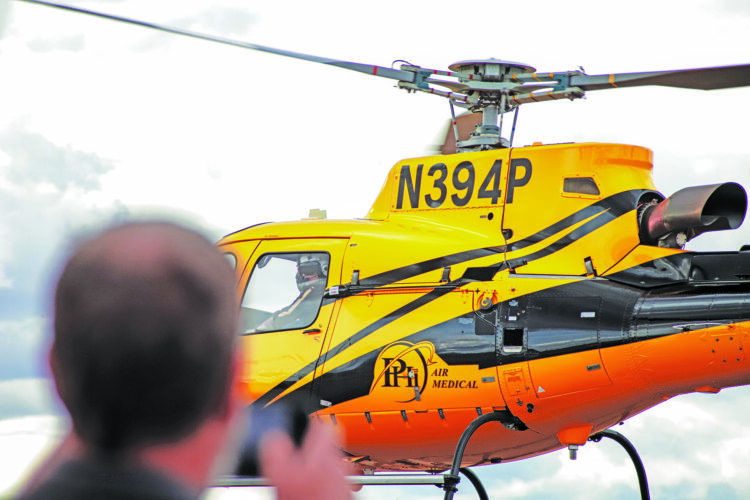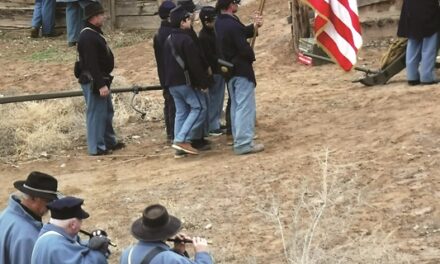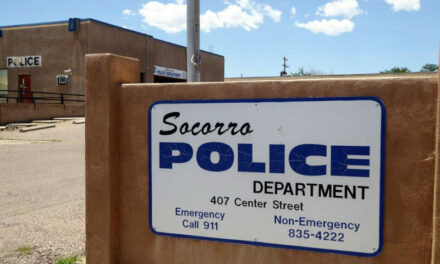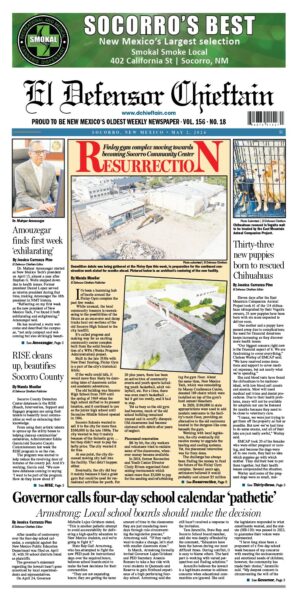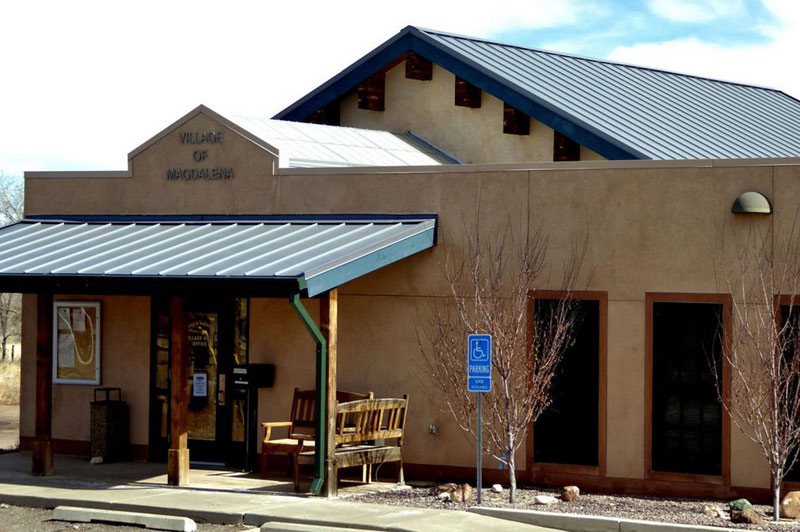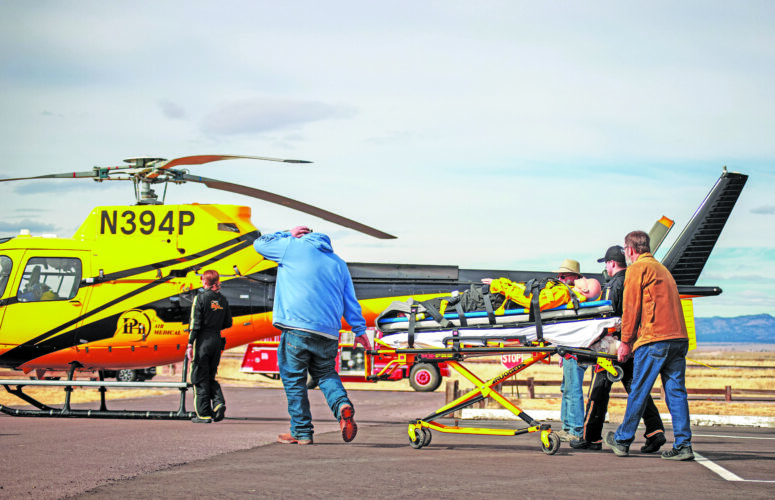
Jessica Carranza Pino |El Defensor Chieftain
The VLA’s Emergency Response Team train with the PHI helicopter at the new landing area.
The VLA’s Emergency Response Team look focused and alert as it transfer their patient, a lifelike dummy, to and from a PHI airlift helicopter. During the training at the VLA, the EMTs practice giving a patient report to the PHI medics while firefighters help move the patient from the ambulance to the aircraft.
“I can train them up for it, but the only way they can really learn is to physically do this and that’s why we bring in the helicopter. It’s not complicated but you have to see it and experience it,” Jason Everett said, who serves as the VLA Fire Chief and as the Emergency Service Manager of NARO.
Everett said that the Nov.16 training was the first time PHI had come out to the VLA. They worked together to determine a landing zone and the VLA staff paved the landing area last month.
He said that although his EMTs were comfortable back boarding, his firefighters hadn’t had the experience yet, and it was important that they learn so they could jump in, in case extra hands were needed in an emergency.
“It gives them the basic knowledge on really important stuff. We put our time in the preparation side so that when it’s go time, we just go, so we don’t have to take time on the response side.” Everett said “We work and work, over and over so we are solid on the skills, then I time them and run drills. The speed comes with repetition and muscle memory and having those goals with time. It adds competition and a sense of accomplishment.”
He said that his goal is to keep building confidence and keep training people to save lives and make good decisions. He is a believer in explaining the reasoning behind the instructions.
“If I don’t tell them why it matters it doesn’t really connect. That’s part of my teaching style.” Everett said. “The good news is these

Jessica Carranza Pino | El Defensor Chieftain
The Emergency Response Team and PHI practice moving a life like dummy into an ambulance.
people are so smart and learn very quickly. It makes it fun to train them.”
The VLA Emergency Response Team is comprised of an impressive group of scientists, engineers, electricians, computer programmers and RFI experts.
The VLA’s ERT trains twice monthly for two to four hours and sometimes attends classes outside of work.
“We are dedicated to being our best and taking care of our staff and guests,” said Katie Grabowski, VLA Operator and Firefighter / EMT.
Fire Chief Jason Everett was hired almost two years ago to recruit, train, and retain these emergency responders. He can only recruit from existing employees who work on site; he has limited time to train them because they are busy with their other jobs.
“My fundamental job is to take care of any emergencies here and then my secondary job is to build a team that can also take care of emergencies. We have no access to EMS or fire departments except for Socorro. The antennas are massive, and we move them every three months on rail tracks. The potential for injury is so profound here based on the size of everything,” said Everett.
That risk coupled with the remote nature of the site, motivated the organization to invest in its own Emergency Response Teams. The ERTs consist of five different groups, with different areas of responsibility: EMTs, structural firefighters, fire support, wildland firefighters, and a soon- to -be rope rescue team.
“In my proposal I wanted it to operate as an elite group, I want to make it desirable to be on the team and I want people enthusiastic and that’s now starting to come into fruition,” Everett said, “I feel really good about that.”
Future training sessions conducted by Everett will include a live fire training, EMT classes at Socorro General Hospital and an extensive rope rescue training that will be designed specifically for a potential situation of rescuing someone stuck on an antenna.
